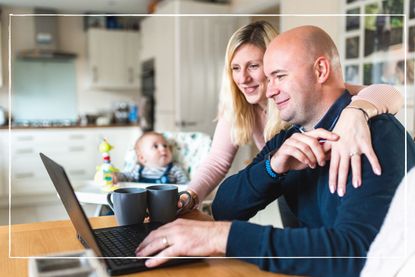
Martin Lewis has been touting the benefits of the Marriage Allowance, but are you eligible to claim it?
When you purchase through links on our site, we may earn an affiliate commission. Here’s how it works.

Money saving expert Martin Lewis has shone a light on the Marriage Allowance while speaking on Good Morning Britain - but do you know how this tax break works and whether you can claim it? According to HM Revenue & Customs (HMRC), there are more than four million couples who are eligible, but only two million claim it, so you could be missing out.
Even though the government has announced the date of the next cost of living payment to help struggling families, if you’re married or in a civil partnership, you may also be eligible to claim extra help with this tax break.
Angela MacDonald, HMRC’s Deputy Chief Executive and Second Permanent Secretary, says: “Marriage Allowance is a tax relief which enables one partner to reduce the amount of tax paid by their other half.
"You can save up to £252 a year and may be eligible to backdate your claim to 6 April 2018, depending on what you and your partner earned during those years."
Also known as the Marriage Tax Allowance, the Marriage Allowance is a tax break that enables those who are married or in a civil partnership to give their partner a portion of their tax free personal allowance to save on income tax.
But there are stipulations.
You can only give a fixed amount of £1,260 each year and one partner must earn less than the annual tax-free personal allowance of £12,570, or be a non-taxpayer. The other partner must be a basic rate taxpayer, paying the 20% rate of income tax. This means that person’s earnings and income must be between £12,571 and £50,270 a year. If you live in Scotland, these limits will be slightly different.
Parenting advice, hot topics, best buys and family finance tips delivered straight to your inbox.
By submitting your information you agree to the Terms & Conditions and Privacy Policy and are aged 16 or over.
Giving up £1,260 of your £12,570 personal allowance to your partner, reduces their tax by up to £252 each tax year.
The Marriage Allowance is worth up to £252 in the current tax year. However, if you have never claimed it before and were eligible, you can backdate your claim to include any tax year since 5 April 2018.
You can use the marriage allowance calculator on the Government website to see how much you might be able to save by claiming.
Rather than being paid as cash, the higher earning partner will have their tax code adjusted, which means they will pay less tax each month. The adjusted code will normally include the letter M to show their claiming the Marriage Allowance. If the higher earning partner is self-employed, any adjustment in tax will usually be made when they file their self-assessment form.

There is a great example on the Government website to explain how the marriage allowance works.
If your income is £11,500, and your personal allowance is £12,570, you will not pay tax on your earnings.
If your partner’s income is £20,000 and they also have a personal allowance of £12,570, they pay tax on £7,430. As a couple you are paying income tax on £7,430.
But when you claim the Marriage Allowance, you transfer £1,260 of your personal allowance to your partner. Your personal allowance therefore becomes £11,310. Your partner’s then effectively becomes £13,830.
While this means you now pay tax on £190 (£11,500 income minus your £11,310 personal allowance), your partner will pay tax on £6,170 (£20,000 income minus the £12,570 personal allowance and the £1,260 transferred allowance). As a couple, this means you are paying income tax on £6,360 rather than £7,430. This means a £214 tax saving.
You will only qualify for the Marriage Allowance if you are married or in a civil partnership, do not pay income tax (or earn below the £12,570 personal allowance) and if your partner pays income tax at the basic rate. This normally means their earnings are between £12,571 and £50,270 a year.
Higher or additional rate taxpayers are not eligible for this allowance.
Additionally, you cannot claim the Marriage Allowance if you and your partner live together but are not married or in a civil partnership.
HMRC's Angela MacDonald says: “You should consider applying if you can say yes to the following three questions:
If you answered yes, put your annual salary details into the marriage allowance calculator on GOV.UK and it will tell you how much you could save."
The non-tax payer (or lower earning partner) must be the one to apply for the Marriage Allowance. You can easily do this online through the Government website.
As well as needing the National Insurance number for yourself and your partner, you will need to provide proof of ID and your P60.
Once you have applied, you should get a confirmation email within 24 hours. There is no need to reapply each year - the allowance will continue automatically.
You must tell HM Revenue & Customs if your circumstances change, if you and your partner split up or if your income has increased, as you may no longer be eligible to claim.
Expert comment from Expert comment from Angela MacDonald HM Revenue and Customs (HMRC)Angela MacDonald is the Deputy Chief Executive and Second Permanent Secretary of HM Revenue and Customs (HMRC). She leads 50,000 colleagues to deliver customer service and compliance and enforcement activity and is accountable to Parliament.